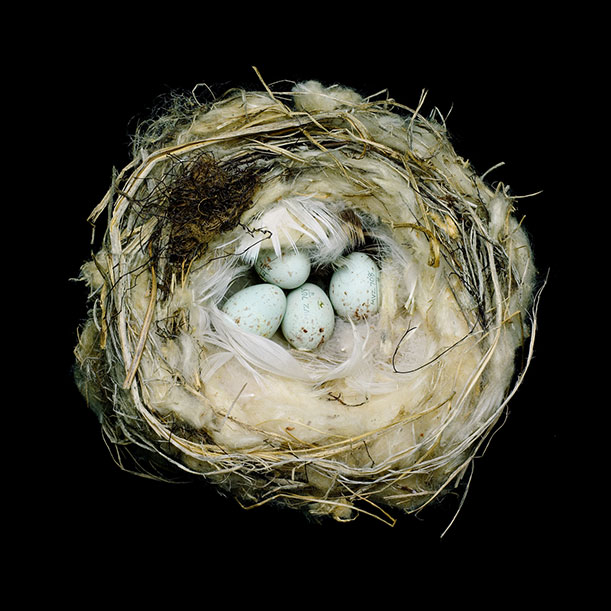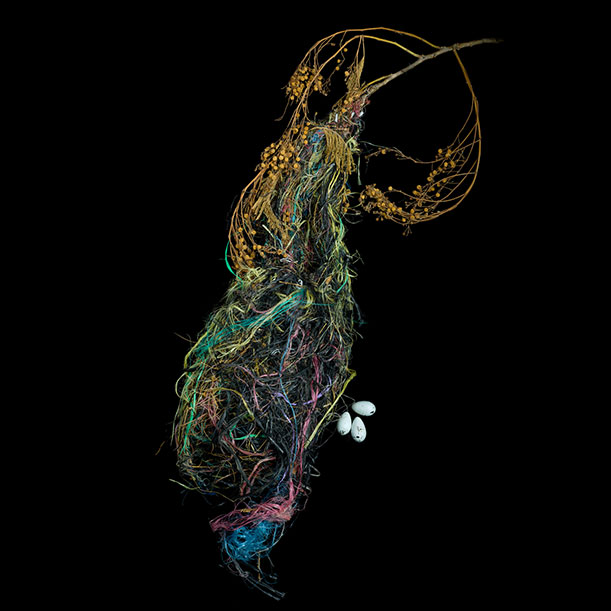The Art of the Bird’s Nest
The architectural masterpieces of numerous bird species are the subject of Sharon Beals’ latest photo series—on display at the National Academy of Sciences
/https://tf-cmsv2-smithsonianmag-media.s3.amazonaws.com/filer/art-of-birds-nest-631.jpg)
A female Altamira oriole toils over her nest for weeks. She gathers long grass, bark, vines, roots, palm fronds, horsehair and colorful twine—”some of civilization’s detritus,” says photographer Sharon Beals. Then, the mother-to-be weaves her materials into a narrow sack, dangling from a high tree branch. She burrows down inside and pads the bottom with straw and feathers, a soft bed for her pale blue eggs.
“Bird nests, even without knowing which birds constructed them, seem hardly possible,” says Beals, on her website. “Creations of spider’s web, caterpillar cocoon, plant down, mud, found modern objects, human and animal hair, mosses, lichen, feathers and down, sticks and twigs—all are woven with beak and claw into a bird’s best effort to protect their next generation.”

Hoary Redpoll (Acanthis hornemanni), Museum of Vertebrate Zoology, Collected from St. Michael, Alaska, on May 28, 1896. © Sharon Beals
To highlight birds’ elaborate architecture, the San Francisco-based artist has photographed nests of various species, all collected sometime in the past two centuries and preserved in the collections of the California Academy of Sciences, the Museum of Vertebrate Zoology at Berkeley, the Western Foundation of Vertebrate Zoology and the Cornell University Museum of Vertebrates. The portraits, of the nests set against a stark black background, are featured in Beals’ latest book, Nests: Fifty Nests and the Birds That Built Them. Through May 2, 2014, a selection of 24 of the photographs are being exhibited in “Nests: Photographs by Sharon Beals” at the National Academy of Sciences in Washington, D.C. The shots are accompanied by illustrations of the nest builders.

Akekee (Loxops coccinea), Western Foundation of Vertebrate Zoology, Collected from Kauai Kokee, Hawaii, on March 29, 1970. © Sharon Beals
Much of Beals’ work has an environmental bent. For a past project, she photographed still lifes made from plastic trash floating in lakes and the ocean. Beal became interested in birds when reading Living on the Wind: Across the Hemisphere with Migratory Birds, a 1999 book by naturalist Scott Weidensaul. She learned about the incredible migrations of Arctic terns and blackpoll warblers and also about the habitat and food supply loss along many of the species’ routes.
“I have become what I call a theoretical birder, one with a very short life list but on a quest to learn what birds need to be sustained both locally and globally,” Beals explains in an artist statement. “It was only after making the first photograph of a nest, drawn to its palette and messy, yet graceful and functional form, that I knew I had found my medium—or at least a way that I could be a medium for the birds.”
Altamira Oriole (Icterus gularis), Western Foundation of Vertebrate Zoology, Collected from Morazón, Guatemala, on May 6, 2001. © Sharon Beals
Beals has since photographed the shelters of young Allen’s hummingbirds, barn swallows, Caspian terns and African palm swifts. She has also managed to capture the nests of spotted-nightingale thrush, social flycatchers and American crows, among others.
From poofs of feathers to wads of leaves to piles of sea shells, the nests reflect the diversity of bird life and certainly evoke the ingenuity of different species, all using resources found in their habitats to build protection. While the nests are constructed to safeguard the birds’ young, there is still a delicate, fragile beauty to them.
“I offer these photographs as a bowerbird lures a mate,” adds Beals, “with the hope that others will be as seduced as I to wonder and learn about the birds that built them.”
“Nests: Photographs by Sharon Beals” is on display at the National Academy of Sciences through May 2, 2014.
/https://tf-cmsv2-smithsonianmag-media.s3.amazonaws.com/accounts/headshot/megan.png)

/https://tf-cmsv2-smithsonianmag-media.s3.amazonaws.com/accounts/headshot/megan.png)